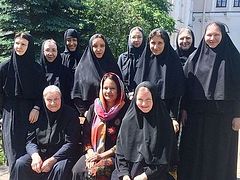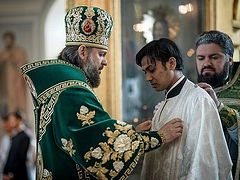Introduction
The Russian Orthodox Church Outside Russia,1 although founded as the church of the post-revolutionary Russian diaspora, also served as the custodian and guardian of the scattered pre-revolutionary Russian Orthodox missions in various parts of the world. From these, some quarters of ROCOR inherited and maintained a missionary spirit that has resulted in Orthodoxy flourishing in places where there had previously been no preaching of Christ’s saving message. Some of these missions have continued to blaze like a fire amidst the growing darkness of our secular age while others have remained ‘perpetual embers,’ steadily glowing through the toils of dedicated missionaries yet never reaching their full potential; God’s will for their full fruition seemingly delayed until He deems it meet.
One such mission field is India: the great subcontinent, birthplace of two of the world’s most significant religions, Hinduism and Buddhism, home to one of its largest Muslim populations, and native land to one of the most ancient eastern Christian communities—the Saint Thomas Christians of Kerala.2 ROCOR has been present in India, to some extent, throughout most of ROCOR’s history, particularly in the years immediately before and after the Second World War. A number of ROCOR luminaries—including some who later became bishops and first hierarchs– were involved in the small Indian mission at one time or another, but few, with certain very notable exceptions, made India their home for any considerable period of time.
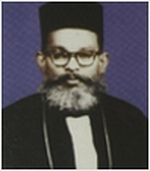 Father George Tharian Although there have been a number of Indian clergymen who have served in ROCOR, few of these were actually the result of direct missionary work in India and the majority of these clergymen, both major and minor, served in countries other than India.3
Father George Tharian Although there have been a number of Indian clergymen who have served in ROCOR, few of these were actually the result of direct missionary work in India and the majority of these clergymen, both major and minor, served in countries other than India.3
With the 2016 cessation of ROCOR’s most recent missionary activities in India, it is now possible to view the full chronology of the eighty-five-year attempt at establishing a permanent and lasting Russian Orthodox presence in India, as carried out by ROCOR.
The mission in India’s history is in four phases: the first is the eighteen years spent in India by Father Andronik (Elpidinskii), who was sent to India with the blessing of Metropolitan Evlogii (Georgievskii)4 in Paris and spent eighteen years in the country from 1931 to 1949. Although technically not a part of ROCOR proper,5 the most fruitful and intense part of Father Andronik’s work in India came during the reconciliation of the various parts of the Russian Church in diaspora and was conducted in close collaboration with ROCOR bishops and clergy, not least the future Metropolitan Anastasii (Gribanovskii)6, at whose behest two delegations were sent. The second and third phases overlap one another: the second is the work of Father Lazarus (Moore), who spent the best part of twenty years (1952—1972) labouring in various locations across India, and the third is the attempt made by Father George Tharian to unite his movement of former Jacobites to the Orthodox Church, which took place during Father Lazarus’ time in India. The fourth phase is the short-lived mission of Father Silouan Benedict in Bangalore from 2013 to 2015.
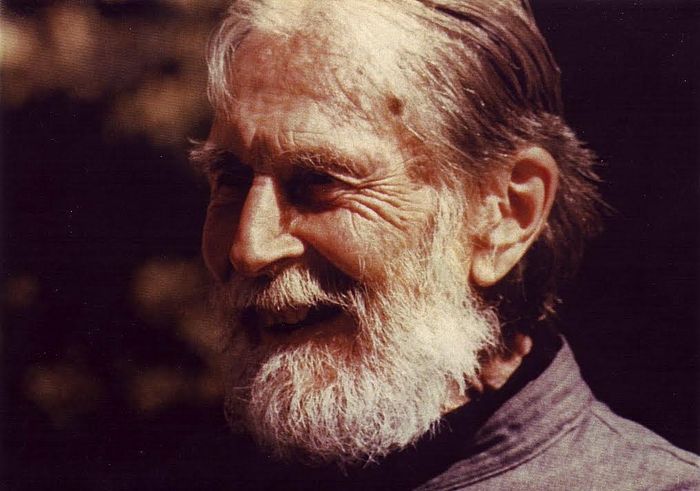 Fr. Lazarus Moore. Photo: rocorstudies.org
Fr. Lazarus Moore. Photo: rocorstudies.org
Using sources taken predominately from the Russian perspective, we are able to construct a detailed outline of the missionary work, including support from Church authorities, the intentions of the missionaries, and, in particular, the reason why the missionaries were sent in the first place. In all cases, it is because ROCOR was contacted by church authorities or persons in India who either wished to unite with the Orthodox Church or be received as individuals. With only limited sources from the Indian perspective, it is not yet possible to ascertain their reasons for seeking union with the Orthodox Church, and the Russian Orthodox Church in particular, with the exception of the individuals who were actually received by the Church. While it might be argued that they were seeking ‘recognition’ from the Orthodox Church, it can be seen from the sources that the Indian church was far too self-assured of its own apostolicity and orthodoxy to be seeking mere recognition in the way that the Anglican Church can be accused of this. The only possible reason that they might be seeking external recognition or validation could be as an additional support in the legal dispute between the two factions of the Indian church. To answer this question, it is necessary to do further research, which would need many more sources from India.
The story of ROCOR’s mission in India is one of frustration, missed opportunities, and unfortunate errors, as well as great piety, ascetic struggle, and witness to the Gospel precepts, with the characters that come and go ranging from great examples of faith and holiness to the shady and downright bizarre. It is nonetheless a story worth telling, a story of how ROCOR, that small band of faithful émigrés and their fellow travellers that discovered the Orthodox faith in their midst, sought to bring Orthodoxy to a nation of almost one billion people.
Pre-Revolutionary Encounters
Unlike in places such as Japan, Korea, China, Persia, and Alaska, where the Russian Empire had considerable influence in assisting the organising of missions with the Russian Orthodox Church, India had always remained outside the Tsar’s sphere of influence. Undoubtedly, this lack of political involvement in India was a direct result of the ‘Great Game’ between the Russian and British Empires. Any kind of Russian overtures towards the Indians in either secular or religious spheres would have been seen as a violation of the British sphere of influence, especially after the establishment of the Raj—British rule over the subcontinent. Because of this, the most notable ‘interaction’ between Russia and India was Tsar Paul I’s proposal to send a large corps of Cossacks to India during his alliance with Napoleon. To the shared regret of Bonapartists and Russian imperialists alike, Tsar Paul’s ‘Indian March’ was cancelled after his assassination in 1801.
Away from the ‘Great Game,’ there has been a smattering of smaller, humbler points of contact made between Russia and India on the subcontinent itself, with the famous account of Afanasy Nikitin, the fifteenth-century Tver merchant who spent many years in India trying to regain his stolen fortune, as detailed in his fascinating work Voyage Beyond Three Seas,7 being one of the most famous. Nikitin’s work details his many encounters with Muslims and Hindus during his long years in India, but there were never any meetings with the Saint Thomas Christians.
The then-Tsarevich Nikolai Alexandrovich Romanov, the future Tsar-Martyr Nicholas II, also visited India as part of his journey around East Asia in 1890. It is not known if a Russian Orthodox chaplain accompanied him on this journey, but his diaries from the time do mention that he visited the Greek Orthodox Church of the Transfiguration in Calcutta8 and encountered the Armenian community9 in the same city, who received their priests from the Catholicate of Etchmiadzin, at that time located in the Russian Empire.
Despite the relative dearth of political-cultural encounters, there were still attempts by the Indian Christians to make contact with the Russian Orthodox Church. From the mid-nineteenth to the early twentieth centuries, the Saint Thomas Christians initiated a policy of ‘reaching out’ to other Christians outside of the subcontinent, especially those who, unlike the Roman Catholics, Anglicans, and Protestants, were not causing ecclesiastical divisions among the native Christians of India. Beginning in 1851, the Indians approached the Russian Orthodox Church on several occasions with the intention of establishing union. In that year, representatives of the Indian Church met with the Russian ambassador in Constantinople and tried to initiate negotiations for rapprochement with the Orthodox Church, but the Crimean War soon put an end to the dialogue.
Undeterred, a second attempt was made in 1898, when an Indian archbishop10 sent a message to the Most Holy Governing Synod in Saint Petersburg, asking for the Russian Orthodox Church to receive his flock, numbering fifteen thousand souls, on account of the difficulties facing the Syriac Orthodox Church of Antioch in fulfilling their obligation to provide the Indians with suitable hierarchs. According to the testimony of the traveller A.I. Vygornitskii, who was the intermediary of the message, the Indians had become acquainted with the Russian church by means of the priests who were attached the ships of the Russian merchant navy. The archbishop had requested that the Russian Church send a priest that speaks English to India, following which they would make the necessary concessions and accept Orthodoxy. A petition was sent, witnessed by the Russian consul, but, possibly due to political considerations, no response from the Holy Synod was ever recorded.11
One final unsuccessful attempt was made in 1904, when a member of the “Syro-Chaldean Church in India”12 approached the Russian Orthodox priest in London, Mitred Archpriest Evgenii Smirnov,13 asking for his church to be received under the protection of the Russian Church. Father Evgenii contacted Metropolitan Antonii (Vadkovskii) of Saint Petersburg,14 who told him that it was not possible to send any clergy to India at this time, again most likely due to political considerations. The archbishop also informed him that the man could not be ordained either, because he did not know the Orthodox typikon. His suggestion was that the man either go to the Russian Orthodox mission in Urmia, Persia, where a large number of Nestorians had been received into the Church and were serving in Syriac, and use that as a connection for the Indian church, or that he be received into Orthodoxy as an individual in London.15 Nothing more is known about the Indian enquirer after this.16
 Nikolai Roerich. Photo: wikipedia On the other side of the spiritual spectrum, India was host to the well-known Russian occultists Helena Blavatskaya17 and Nikolai Roerich.18 Both of them travelled extensively in India, seeking hidden knowledge and the mysteries of the cosmos. From the late nineteenth to the mid-twentieth centuries, their many followers and disciples would make similar journeys to seek spiritual enlightenment among the gurus and sadhus of India. Fortunately, a number of Russians who were led astray by Blavatskaya’s teachings were later reconciled with the Church.
Nikolai Roerich. Photo: wikipedia On the other side of the spiritual spectrum, India was host to the well-known Russian occultists Helena Blavatskaya17 and Nikolai Roerich.18 Both of them travelled extensively in India, seeking hidden knowledge and the mysteries of the cosmos. From the late nineteenth to the mid-twentieth centuries, their many followers and disciples would make similar journeys to seek spiritual enlightenment among the gurus and sadhus of India. Fortunately, a number of Russians who were led astray by Blavatskaya’s teachings were later reconciled with the Church.
Closer in history to the eventual arrival of Russian Orthodoxy in India is the presence of an obscure Russian Mennonite Brethren mission in Hyderabad state, originating in the 1890s and having considerable success among the Telegu-speaking peoples there. Of course, these Russian Mennonites were actually German-speaking people, so the eventual foundation of an authentically Russian religious mission in India fell to the post-revolutionary missionaries of ROCOR.
The 1930s were the key decade in the establishment, not only of the mission in India, but also of serious and prolonged communications with the Saint Thomas Christians, namely the Malankara Orthodox Syrian Church, which had separated itself from the Syriac Orthodox Church of Antioch, also known as the Jacobite Syriac Orthodox Church in India, in 1912. The above-mentioned policy of ‘reaching out’ by the hierarchs of the Indian church eventually led, on September 24th 1934, to the meeting between Catholicos Baselios Geevarghese II19 and the then-Archbishop Anastasii in Jerusalem in which the catholicos expressed a desire for unity between his church and the Russian Orthodox Church. The catholicos requested that the Russian Church send missionaries to India and carried letters to Archbishop Anastasii from Hieromonk Andronik (Elpidinskii), a Russian priest already present in India since 1931, indicating that Father Andronik was in support of this.20 During his time in the Holy Land, Catholicos Geevarghese was received with patriarchal honours and traditional Russian hospitality, which was reciprocated in later years when Russian and Serbian bishops made visits to India. Upon his return to Kerala, the catholicos convened a synod of his bishops, who agreed to approach ROCOR and begin negotiations for the eventual union of the two churches.
In response to the Indian bishops, the 1935 council of representatives of the Russian Church, which had been called by Patriarch Varnava (Rosi
) 21 of Serbia with the intention of reuniting the various factions of the Russian diaspora, led by Metropolitans Antonii (Khrapovitskii),22 Evlogii, and Feofil (Pashkovskii),23 decided to send Bishop Dimitri (Voznesenskii)24 to India in order to assess the state of the Malankara Orthodox Syrian Church. The Serbian Orthodox Church financed the bishop’s journey to the sum of twenty thousand dinars and agreed to provide further support to ROCOR if the visitation proved fruitful.25 Prior to this decision being made, the council of bishops had heard a report from Archbishop Anastasii and had read a letter from the Indians, in which they explained their confession of faith. Archbishop Anastasii responded to them and stated that the council found their confession of faith to be the same as that as confessed by the Orthodox Church, although further clarification was required regarding their acceptance of later ecumenical councils.26
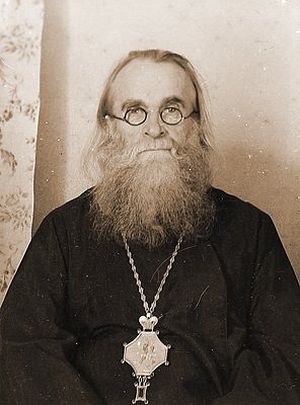 Bishop Dimitri (Voznesenskii) Bishop Dimitri, one of ROCOR’s bishops in Manchuria, was met by Father Andronik upon his arrival in India in February 1936 and, during his three weeks in the country, he discovered a church that had around five hundred parishes, five bishops, a monastery with around twenty monks in Travancore, a small convent, a seminary in Kottayam, and a network of parish schools and charitable institutions. Accompanied by Father Andronik, who served him as translator, he met with the catholicos at his residence in Kottayam. According to Father Andronik, there were no dogmatic disagreements between Bishop Dimitri and the assembled Indian bishops, although the question of recognising all seven of the ecumenical councils proved to be a barrier to further progress in discussion.27
Bishop Dimitri (Voznesenskii) Bishop Dimitri, one of ROCOR’s bishops in Manchuria, was met by Father Andronik upon his arrival in India in February 1936 and, during his three weeks in the country, he discovered a church that had around five hundred parishes, five bishops, a monastery with around twenty monks in Travancore, a small convent, a seminary in Kottayam, and a network of parish schools and charitable institutions. Accompanied by Father Andronik, who served him as translator, he met with the catholicos at his residence in Kottayam. According to Father Andronik, there were no dogmatic disagreements between Bishop Dimitri and the assembled Indian bishops, although the question of recognising all seven of the ecumenical councils proved to be a barrier to further progress in discussion.27
During the course of his visit, he gave several lectures to the Indians, including one that was attended by up to five thousand people, in which he explained the differences between the Orthodox faith and the monophysite faith held by the Malankara Church. He insisted that union could only be possible if they accepted all seven ecumenical councils, instead of only the first three. Although he was well-received by the Indians, there was considerable hostility towards the Fourth Ecumenical Council of Chalcedon, a remnant of their centuries-long association with the Syriac Orthodox Church of Antioch. Bishop Dimitri responded by promising to send them a book about all seven councils, which would explain everything to them that they needed to know. Later developments would show that this deep-rooted hostility to the Council of Chalcedon would be a consistent barrier in negotiations with the Malankara Church.
For the lone missionary, Father Andronik, the visit of the bishop was of utmost spiritual importance, as he was able to confess to the hierarch, as well as serving alongside him at his skete near Travancore. Bishop Dimitri, supportive of the mission, left Father Andronik with a large sum of money—hidden inside a copy of the writings of Metropolitan Antonii —after his departure to China and wrote positively of the work taking place in India in his diocesan journal, Bread of Heaven.28
Based on the reports that Bishop Dimitri made to the Synod, the Bishops’ Council of the Church Abroad adopted a resolution stating the need for further negotiations and work in India, and to send the necessary materials for instructing the Indians in Orthodoxy. Igumen Filaret (Voznesenskii)29 from Harbin, the son of Bishop Dimitri, was assigned to lead this work but, due to Archbishop Nestor (Anisimov)’s30 letter to the Synod stating that Igumen Filaret had no missionary vocation, nothing materialised. Abbess Evgenia from the Russian Ecclesiastical Mission in Jerusalem was also instructed to take some nuns to India to establish a convent and orphanage,31 but she was unable to do this due to the Second World War and lack of funds. These resolutions show that the Russian bishops were taking the situation seriously and were committed to trying to bring the Indian church back to Orthodoxy, although their best intentions were thwarted by circumstances.
The Synod also responded to Father Andronik’s desire for a swift reunion by writing a letter informing him that this would be impossible, as all other local Orthodox Churches would need to be involved in the decision, not to mention that the Indian Christians had not yet explicitly recognised all seven ecumenical councils.32 Copies of the decrees and definitions of the seven ecumenical councils were sent to the Indian catholicos, as promised by Bishop Dimitri, but this gesture did not help much in removing the stumbling block of Chalcedon and later councils.
The initial visit of Bishop Dimitri to India, which had the blessing of the Serbian Orthodox Church, opened up another connection between the Orthodox Church and the Malankara Church.33 The Serbians had become interested in the situation in India and, in the winter of 1936/1937, they had already sent their own representative there in the person of Metropolitan Dositej (Vasi).34 He visited the small Russian mission there under Father Andronik, whom he gifted two antimensia from Patriarch Varnava and elevated to the dignity of archimandrite at the request of Metropolitan Evlogii.35 He attended the World Conference of the Young Men’s Christian Association in Mysore, which was his primary purpose in India, from January 2nd onwards and later visited Kerala, along with Feodor Pianov,36 a leader in the Russian Student Christian Movement37 and employee of the YMCA. He also left Father Andronik with a substantial sum of money when he departed and helped maintain the mission financially until the beginning of the Second World War.38 Inspired by the mission in India, the well-known Bishop Nikolai (Velimirovi
)39 also contributed financially. He later met Father Andronik in America and told him of Patriarch Varnava’s great love for the Russian missionary in India.40
During the two weeks he spent in Kerala, Metropolitan Dositej stayed at the Old Seminary in Kottayam as a guest of Catholicos Geevarghese. As a result of the friendship formed on this visit, Metropolitan Dositej arranged for the Indian catholicos to make an official visit to the Kingdom of Yugoslavia, by which time Dositej was locum tenens of the patriarchal throne of the Serbian Orthodox Church, following the death of Patriarch Varnava.
In September 1937, exactly three years after the Jerusalem meeting, the catholicos arrived in Yugoslavia as part of the twenty-five year anniversary celebrations of his church’s autocephaly, where he visited monasteries, parishes, and even addressed over one thousand Serbian Orthodox clergymen, including a number of bishops. When the catholicos left Yugoslavia on September 30th, he was seen off at the railway station in Belgrade by half a dozen bishops, with his old acquaintance Metropolitan Anastasii, by this point First Hierarch of ROCOR, among them. Prior to his arrival in Yugoslavia, the catholicos had met with Metropolitan Evlogii in Paris, where he had served a memorial service for the recently-reposed Patriarch Varnava of Serbia, and had worked in association with the Russian Orthodox party at the Faith and Order conference in Edinburgh.41
Now, the small Russian mission of Father Andronik actually predated the initiation of contact between the Indians and ROCOR, having commenced with the arrival of Father Andronik in 1931.42
 Fr. Andronik (Elpindinskii). Photo: rusbeseda.org A well-travelled man, Father Andronik was born Andrei Iakovich Elpidinskii in 1894 in Petrozavodsk, Olonets province, the seventh child of Iakov Semenovich Elpidinskii, a church historian, graduate of Saint Petersburg Theological Academy and teacher at the Olonets Theological Seminary for over thirty years. In his memoirs he recounts how he, the grandson of a priest on both sides of his family, had a pious upbringing with both father and mother teaching him the law of God, prayer, and fasting. Undoubtedly, he was prepared for his future missionary labours by his adventurous youth, in which he participated in a number of sports and outdoor activities, including fishing and mushroom picking, which later came in helpful.43
Fr. Andronik (Elpindinskii). Photo: rusbeseda.org A well-travelled man, Father Andronik was born Andrei Iakovich Elpidinskii in 1894 in Petrozavodsk, Olonets province, the seventh child of Iakov Semenovich Elpidinskii, a church historian, graduate of Saint Petersburg Theological Academy and teacher at the Olonets Theological Seminary for over thirty years. In his memoirs he recounts how he, the grandson of a priest on both sides of his family, had a pious upbringing with both father and mother teaching him the law of God, prayer, and fasting. Undoubtedly, he was prepared for his future missionary labours by his adventurous youth, in which he participated in a number of sports and outdoor activities, including fishing and mushroom picking, which later came in helpful.43
Following the family tradition, Andrei attended Olonets Theological Seminary, and after six years of study, including one at the Tauride Theological Seminary in south Russia, where he went to improve his health, he graduated in 1916. He was not to go directly into the service of the Russian Orthodox Church upon graduating, however, as he ended up spending almost ten years trying to survive the vicissitudes of the Great War, the Russian Revolution, the Russian Civil War, and impoverished life in the diaspora. Immediately after graduation, he joined the Land Union44 and served until January 1917 in Galicia and Romania. Following this, he was enrolled as a student at the Petrograd Theological Academy but was soon enlisted into the army reserves, serving until the end of the war and eventually being appointed as an education officer.
Following demobilisation, Andrei survived through the Civil War by finding various teaching jobs in Petrozavodsk, Petrograd, and Murmansk. Following the war, he escaped to Finland, spending two weeks in prison in Helsingfors before working in a paper mill. He subsequently moved to Germany where he qualified as an electrical technician while working at a shipyard. Dreaming, however, of serving the Church, in 1923 he made his way to Paris, the heart of the Western European Russian émigré community.
In Paris, he soon encountered Metropolitan Evlogii and the Russian Christian Student Movement that had been formed by young Russian refugees. He later enrolled in some of the first classes at the Saint Sergius Theological Institute that had been founded and on November 2, 1925, he was tonsured a monk at the Sergievo Podvor’e in Paris, being ordained a hieromonk two weeks later. Father Andronik hoped to start his own monastery, possibly in Canada or South America, but instead found himself serving in a small parish in Belfort, where a number of Russians who worked at the Peugeot plant lived.45
Having had a desire to serve in India since his time at seminary, where he read of the Saint Thomas Christians in a church history textbook, Father Andronik asked Metropolitan Evlogii for a blessing to depart for the east after serving in Belfort for just under six years. He had worked at the Peugeot plant alongside his parishioners, so was able to fund the trip himself. Already in 1929, he had made contact with some Russians in India, who had categorically told him to stay in France if he knew what was good for him, but later, another of their number sent him a letter telling him to hasten to India. He eventually set off from Marseilles in the steamer Generale Messanger July 3rd 1931, arriving in Colombo, Ceylon46 by way of Egypt and Djibouti, on July 20th 1931.47
During his voyage to the east, Father Andronik met and conversed with some Ethiopian monks in Egypt who were enroute to the Holy Land and one of his cabin mates was an Indian Muslim merchant from Bengal who told him that he and his family were interested in converting to Christianity. Father Andronik later wrote to the merchant, receiving no response; he wryly noted in his memoirs that he only realised after several years in India that he perceived that Indians will say such things or make certain promises either for some benefit, or simply for the pleasantness of the conversation.
Following his arrival in Colombo, Father Andronik travelled on to India, where he was met by Spiridon Fedorovich Kirichenko, a former White Army officer, who took him to his farm, not far from Bangalore. The Kirichenko farm was to be the first operating base for Father Andronik’s mission in India. He lived here for some eight months, working on the land with hired Indian farmhands, learning English, and serving several times a week at a small chapel he established on the premises.48
Reflecting in his memoirs, Father Andronik wrote that he did not feel capable of being the one that would bring Orthodoxy to the Hindus; instead, he felt that he would be best used trying to mediate the return of the Indian Christians to the Orthodox Church. To this end, very early in his stay in India he made contact with the various factions that were present in Kerala. In October 1931, he visited Travancore and Kottayam in order to become acquainted with them and ended up befriending some of the major figures in Indian Christianity.
His first meeting was with Catholicos Geevarghese, who received him warmly at the Old Seminary in Kottayam, which was his residence. The catholicos was head of the ‘catholicos party,’49 that part of the Malankara Church that had separated from the Syriac Orthodox Church of Antioch in 1912 and would later reach out to ROCOR in both the 1930s and 1950s, seeking union. It is interesting to note that, at the time of their first meeting, the catholicos asked Father Andronik if he was an Armenian monk, as he did not know any other Orthodox monks besides Armenians.50 It seems that, prior to the meeting with Father Andronik and his later encounter with the Russian mission in Jerusalem, the catholicos had little to no knowledge of the Russian Orthodox Church. Father Andronik and Catholicos Geevarghese became close and he usually stayed at the seminary when he was visiting Kottayam. He also met and befriended some of the seminary teachers and answered the many questions of the seminarians, who were undoubtedly intrigued by the arrival of their strange guest.51
During this same trip, he was also introduced to the head of the ‘patriarchal party,’52 who at that time was the Syriac Jacobite Patriarch of Antioch Elias III53 himself, on a visit to India, accompanied by a retinue of clergy from Syria and Iraq. At this time, Father Andronik was uncertain of the ecclesiastical state of Middle Eastern Christianity and, when he asked the patriarch if he was the same Patriarch of Antioch that the Russians and Greeks were in communion with, the patriarch replied positively.54 Father Andronik became suspicious once he realised that their liturgical celebrations were not at all like that of the Russian Church, something he held to be strange since a previous Greek Orthodox Patriarch of Antioch had graduated from theological academy in Russia. Having later come to the realisation that there are five competing Patriarchs of Antioch,55 he writes in his memoirs that he forever remembered the patriarch, who evidently did not impress him, as a “fat liar.”56 Father Andronik believed that the patriarch was telling people in India that he was in communion with the Greeks and Russians as a way of raising his authority in a time when his Indian flock had been divided into several factions. Patriarch Elias III died shortly after this meeting and was buried in India.
Following his encounter with the Jacobites, the last group to make Father Andronik’s acquaintance on this initial expedition was the Mar Thoma Syrian Church,57 whose leader, Metropolitan Titus,58 hosted him. Father Andronik quickly came to the conclusion that this group had more or less become protestant and he did not stay around to attend their services.59
On another, later, visit to Travancore, Father Andronik was also to make the acquaintance of the local hierarch of the Chaldean Syrian Church,60 Metropolitan Mar Abimelek Timotheos,61 who became a friend of his and taught him how to make inexpensive wine from locally-produced dry grapes, a very useful skill for a missionary like Father Andronik.62 Although they were able to have warm relations and the Nestorians even softened their position at times, by the end of Mar Abimelek’s life, he had become hardened in his Nestorianism and told Father Andronik that the entire Russian Orthodox Church needed to accept this doctrine.63
During his two-week stay in Travancore, Father Andronik was introduced to Father Alexios,64 the abbot of Bethany Ashram, a monastery of the catholicos party, and was invited to stay here by both Catholicos Geevarghese and Father Alexios.65 With the subject of union between the Indian and Russian Churches having already come up, Father Andronik sought the blessing of Metropolitan Evlogii to proceed with this task. Unfortunately, this was a time of crisis for the Russians and Metropolitan Evlogii’s requests to the Patriarch of Constantinople went unanswered. Realising that there was little hope of starting a mission at the Kirichenko farm, Father Andronik accepted the offer and moved to the monastery in March 1932.66
Ultimately, Father Andronik spent around a year at the Bethany Ashram, which was in Vadasserikara, near Travancore. As the monastery had just undergone a large schism, with the majority of the brotherhood joining the Roman Catholic Church, Father Andronik found a small community of around eight monastics and twenty orphans.67 During his time at the ashram, he gave the brothers a pleasant surprise by joining in with the common tasks, such as toiling in the garden, when he was not studying English. In his memoirs, he noted that he found the monastic life at the ashram quite different to that found within the tradition of the Orthodox Church: the services were quite shorter and more frequent, there was no strict austerity, no rite of tonsure, and no use of the Jesus Prayer.68
Father Andronik noted that he did not exactly join in with the common services of the brotherhood, instead adapting his own monastic rule to fit the circumstances. He had everything required to serve the Divine Liturgy with him and, since the brotherhood maintained a parish nearby, leaving the ashram empty on Sundays and feast days, Father Andronik was able to serve Orthodox liturgies in the main monastery church on those days, as well as some other weekdays, with the occasional local stopping by to see what was going on.69
The monks at Bethany Ashram conducted extensive work in the world: mission trips, lectures, retreats, etc. and Father Andronik was taken along on some of these occasions, in which he was able to make more contacts with the Indian Christians. On one occasion, he was asked to give two lectures about Orthodoxy to an audience of around five thousand students.70 Upon completion, the local bishop, Metropolitan Philoxenos,71 declared that it should be translated into the local language and printed for distribution. It seems like, at this point in time, there was a genuine desire for unity at all levels of the Malankara Church, and Father Andronik was told that his lectures allowed the people in stand more firmly in their Orthodoxy, especially in light of continued Roman Catholic and Protestant proselytism.72 Many sermons of the period mentioned that the Indians stood alongside the Russians, Greeks, Serbians, Romanians, and Bulgarians in Orthodoxy, as well as the Copts, Ethiopians, Armenians, and Syrians, showing that there were still some misunderstandings in the theological sphere.
In terms of missionary work, Father Andronik’s year in the ashram was not particularly productive. Although he accompanied the brotherhood on their preaching missions, all subsequent catechism and baptisms were carried out by the Indian clergy, with Father Andronik’s flock consisting solely of the dispersed Russians in India. Nonetheless, it was not without notable incidents: Father Andronik was contacted by an Englishman, Reverend James Yorke Batley,73 who claimed to have been consecrated by an unnamed Assyrian prelate.74 In fact, Batley had previously served as Vicar General for Mar Jacobus (Ulric Vernon Herford),75 “Metropolitan of India, Ceylon, Mylapore, etc. of the Syro-Chaldean Church, Patriarchate of Babylon and the East.” This obscure group had started as part of the Syriac Synagogue in Madras, a Western Rite mission of the Malankara Church, founded by the missionary Padre Luis Mariano Soares,76 which later separated and became part of the Evangelical Catholic Communion.
Batley had established some missions in the south of India and, desiring to return to his native England for health reasons, requested to hand over the entire mission to the Russian Orthodox Church, possibly believing that the Russians would support the mission financially. Father Andronik wrote to Metropolitan Evlogii about the situation, but he received no reply.77 It could be that the reply from the Metropolitan was simply lost or that he found the group’s claims to be dubious and chose not to get involved. Either way, this turns out to have been for the better, since both Herford and Batley had roots in very unorthodox movements: Despite being consecrated bishop by Mar Basilios Soares (the former Padre Luis Mariano), who was by then a metropolitan of the Chaldean Syrian Church, Herford’s past was in the Unitarian Church in England, while Batley had previously been a part of the so-called Society of Free Catholics, something of an Oxford Movement within the Unitarian Church that mixed Unitarianism, Catholicism, and socialism.78
India was awash with fragments of various vagante79 groups such as this and Indian Christianity to this day remains a minefield of such activity. One of the recurring themes in ROCOR’s history is its frequent encounters with such groups, not only in India, but elsewhere in the world, some of which have led to successful reception into the Orthodox Church and others which have been disastrous.
It was this incident that led to Father Andronik’s departure from the Bethany Ashram. Viewing Batley’s group optimistically, he thought that something good might be able to come from their reception into the Church but the Indians, who were in the process of trying to consolidate their church and bring these small fragments back into the fold of the catholicos, preferred that Father Andronik back off. Father Alexios told him that, as a guest, he should be obedient to them and not get involved in such matters. Feeling that he would be putting material benefit and convenience ahead of his independence as a missionary if he stayed, Father Andronik decided that it would be best if he moved on.80 He left the ashram on good terms with the abbot and brethren, and returned occasionally for visits, always being welcomed with warm hospitality and love from his good friends.



